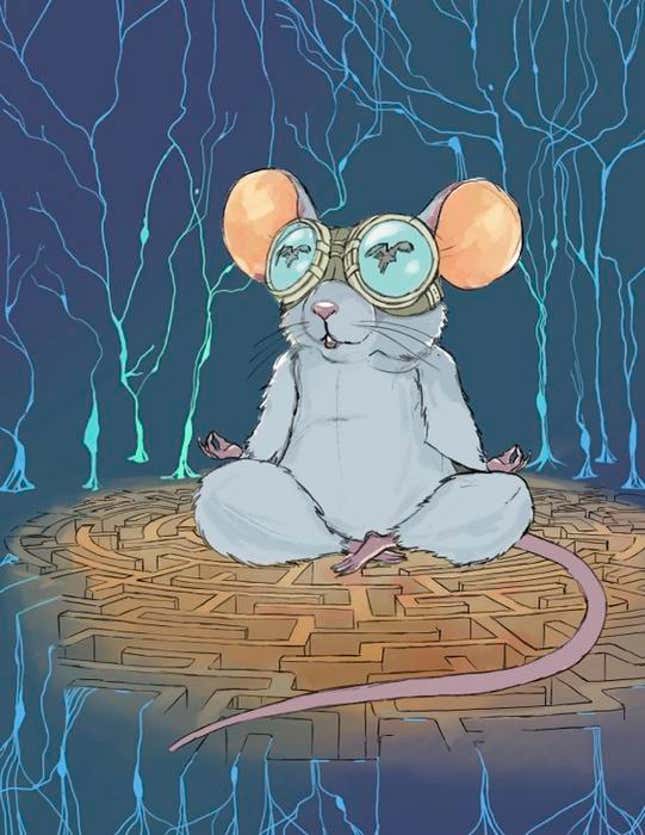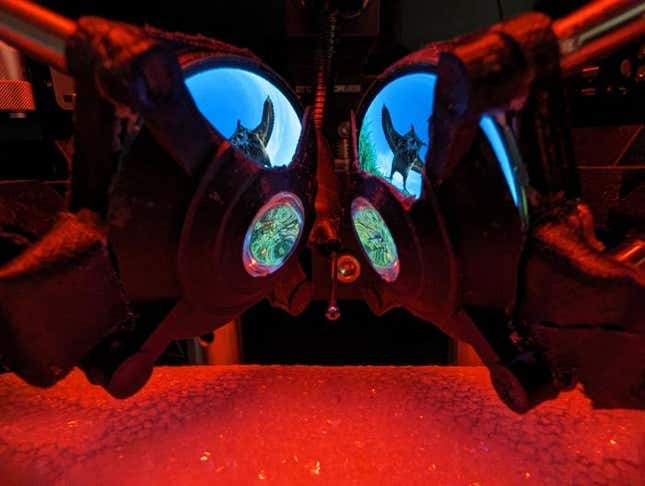At last, researchers say they’ve found a way for lab mice to easily use virtual reality goggles. The unusual set-up does have practical applications, since it should make it easier for scientists to investigate how mice answer to things commonly encountered in the wild, appreciate predatory birds.
Sending mice into virtual reality isn’t a new concept. Ideally, VR allows scientists to simulate naturalistic environments for mice under more controlled conditions. But even the most advanced systems today are clunky. Mice will be placed onto a treadmill while they’re surrounded by computer or projection screens, for instance, but these screens can’t cover the whole lab, and it typically takes some time for mice to even focus on the VR environment.

Researchers at Northwestern University say they’ve now designed a VR structure that should be much more life-appreciate for lab mice, aptly called the iMRSIV (pronounced “immersive”) system. The set-up works much appreciate the Oculus Rift and other popular VR goggles, though the rodents aren’t actually wearing mouse-sized lenses. Instead, the goggles are attached to the base of the system, and the mice are placed close enough to them that they cover their entire field of vision. The mice can also run in place thanks to a treadmill.
In a paper published Friday in the journal Neuron, the team found that mice seemed to take to the iMRSIV system much faster than conventional VR set-ups.
“We went through the same kind of training paradigms that we have done in the past, but mice with the goggles learned more quickly,” said senior investigate author Daniel Dombeck in a statement from the university. “After the first session, they could already complete the task. They knew where to run and looked to the right places for rewards. We think they actually might not need as much training because they can engage with the environment in a more natural way.”
Dombeck and his team also tested whether the goggles could accurately simulate overhead natural threats appreciate birds, something that hasn’t been possible in the past. To do this, they created a projection of an expanding dark disk that would emerge from the top of the goggles. When the mice saw this projection, they tended to either freeze or run faster—responses typically seen in the wild.

The researchers next hope to simulate other common occurrences in nature, such as scenarios in which the mice are chasing after potential small prey. And though there are still some things they’d appreciate to work on, the team feels that their set-up can offer plenty of advantages over other systems currently available.
“Traditional VR systems are pretty complicated,” Dombeck said. “They’re expensive, and they’re big. They necessitate a big lab with a lot of space. And, on top of that, if it takes a long time to train a mouse to do a task, that limits how many experiments you can do. We’re still working on improvements, but our goggles are small, relatively cheap and pretty user friendly as well. This could make VR technology more available to other labs.”

